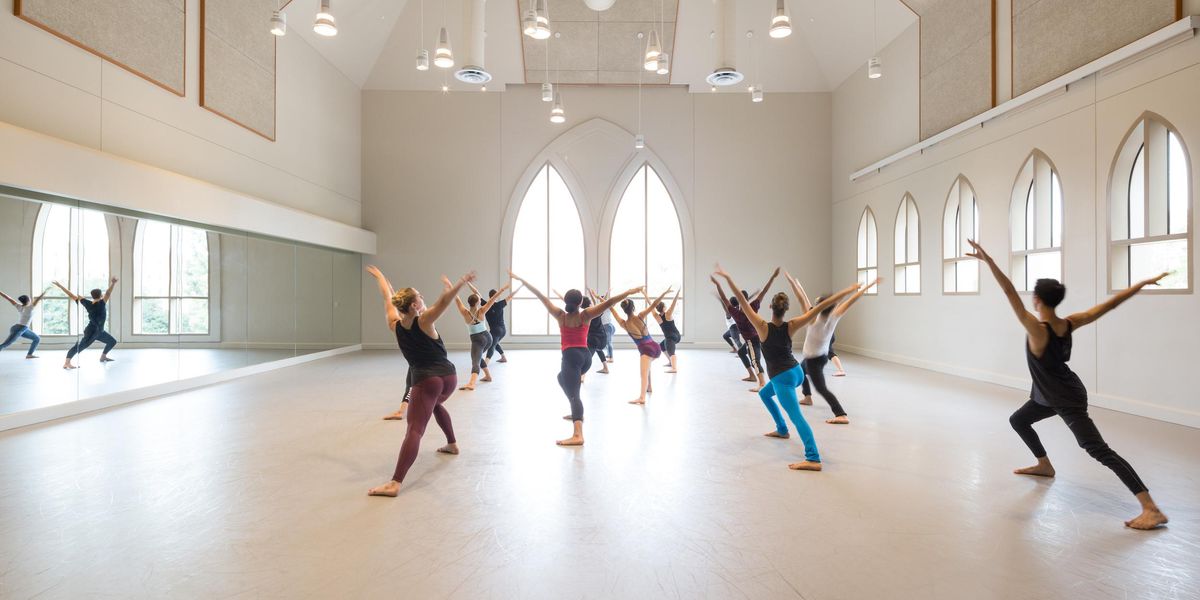Centerwork: Alive and Kickin' Once Again
Masashi Mishiro teaches at the 2009 Jazz Dance World Congress. Photo by Pedro Brenner, Courtesy Giordano.
“Jazz was always a melting pot,” says Nan Giordano, artistic director of the Jazz Dance World Congress. “It incorporates the roots and rhythms of African dance, the strong core of ballet, the freedom of modern dance, the rhythms of tap. I think that, now, jazz dance sets the pulse in other genres.”
Giordano comes by her faith in jazz dance honestly. Her father, Gus Giordano, formed the troupe she now heads, Giordano Jazz Dance Chicago, in 1963. He founded JDWC—a five-day summer conference that includes student workshops, professional performances, and a choreography competition—in 1990, and made Nan Giordano artistic director. After her father’s death, in March 2008, the 2009 congress was difficult for her. “I just wanted to get through it,” she says. “People kept coming up to me, sobbing.”
That year was the last for JDWC—until now. It’s back this month, and for the first time it’s happening in Pittsburgh, primarily at Point Park University in its sleek $16 million dance complex, but also at the August Wilson Center for African American Culture. Previous congresses have been held in Japan, Germany, Mexico, and Costa Rica, as well as in JDWC’s hometown, Chicago. The congress is “definitely not a money maker,” Giordano says. But several in-kind sponsorships (including from Dance Magazine) help JDWC break even.
This year is also the second time (the first was in 2009) that representatives from a number of colleges and universities—half a dozen this time, including University of the Arts and University of Arizona, in addition to Point Park—will attend an audition/class open only to registered congress participants. Point Park has committed $100,000 in scholarship funds for JDWC attendees. “The university auditions and scholarships are another perk for the high school–age students,” says Giordano. Though the congress is open to dancers 13 and up, with a Kids Jazz Dance program for 9- to 12-year-olds, auditions are restricted to registrants entering their senior year.
Over the years, Giordano has been impressed by the training and sophistication of the Point Park graduates she’s taken into her company. Convinced that the four-year education at PPU prepares dancers for life both on and off the stage, she proposed a partnership with the university, adding school auditions and scholarships to the JDWC mix.
With college representatives attending JDWC, Giordano says, young dancers can now see “not only the industry people, the commercial contacts, but they see that a college education is crucial. My strong feeling about this comes partly from being a parent myself. My son, who’s 16, is gifted athletically, but I told him he has to get his four-year degree. The body—with dance and athletics—it’s a fragile thing. Dancing is a short span in your life.”
Joe McGoldrick, Point Park’s director of artistic recruitment, agrees that a college education gives aspiring professional dancers a leg up. “Students gain maturity while getting a college degree,” he says. “And they have the chance to learn a national repertory.” McGoldrick, the point person for JDWC’s auditions and scholarships, adds that about a third of Point Park’s 200 dance majors are focused on jazz. “We started our program in the ’70s, so we have a long history with jazz.”
Among JDWC’s 14 instructors this year is L.A.-based Liz Imperio, who has taught at the congress since 1999. (Past faculty members include other big names like Pattie Obey and Randy Duncan.) “It’s slowly being overlooked—the power and necessity, the essence of jazz,” says Imperio, whose choreography credits include tours for Madonna and Jennifer Lopez. “But with its strong lines, jazz has a direct connection to the commercial pop world. So much strength is needed for dance to come across onstage. Our industry can’t afford to ignore jazz.”
“The beauty of jazz dance,” Imperio adds, “is that it continues to diversify. Jazz has to fuse and evolve. But there’s a huge gap of information about the history of the form. The more curious you are as a dancer, the more knowledge you’ll get—and you’ll be more valuable to a choreographer. I see dancers pigeonholing themselves and not making it, then wondering why. They’re missing out on what more they can fall in love with.”
Giordano says that dance versatility “starts with a foundation in ballet, jazz, and tap. The congress homes in on jazz dance, but most of the students who attend have had just one style of jazz. Here they’re exposed to 14 styles.” She believes that shows like So You Think You Can Dance have made young performers realize how critical it is to be well-rounded.
While her father was “generally against competitions,” Giordano says, he started JDWC’s International Choreography Competition in 1992, and it remains part of the congress. “If you’re doing the competition along with classes and performances, there’s a context for it,” she says. “It can elevate the art form.” Though ICC performers must be registered at JDWC, the choreographers can be amateurs or professionals. Past winners have included Billy Siegenfeld and Mia Michaels, as well as up-and-comers Kate Jablonski and Braham Logan Crane.
Giordano also believes in exposing young dancers to multiple influences. For JDWC’s performance component, the Jazz Dance World Festival, she aims to showcase a wide range of styles. The four evenings at the Byham Theater include the Giordano company, Mexico’s Cuerpo Etéreo Danza Contemporánea, Japan’s Masashi Action Machine, Philadelphia’s Koresh Dance Company, Philadanco, Pittsburgh Ballet Theatre dancers in a piece by Dwight Rhoden, and more.
“I see the future of jazz dance as vibrant,” Giordano says. “I think it will become even more diverse. I’m trying to create a wider scope for dance—for entertainment to be an equal part of the mix. I want to draw in that person who thinks he doesn’t like dance, but who comes to a show and loves it.”
Laura Molzahn writes about dance and the arts in Chicago.




